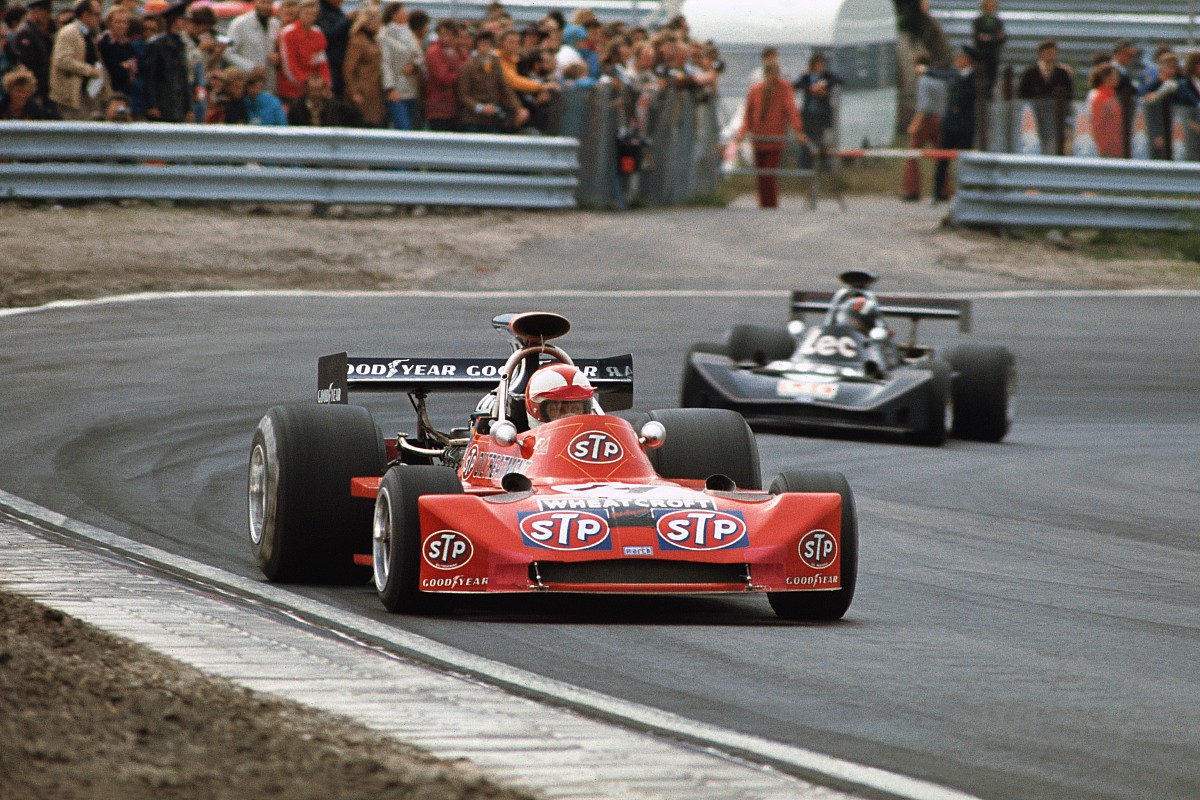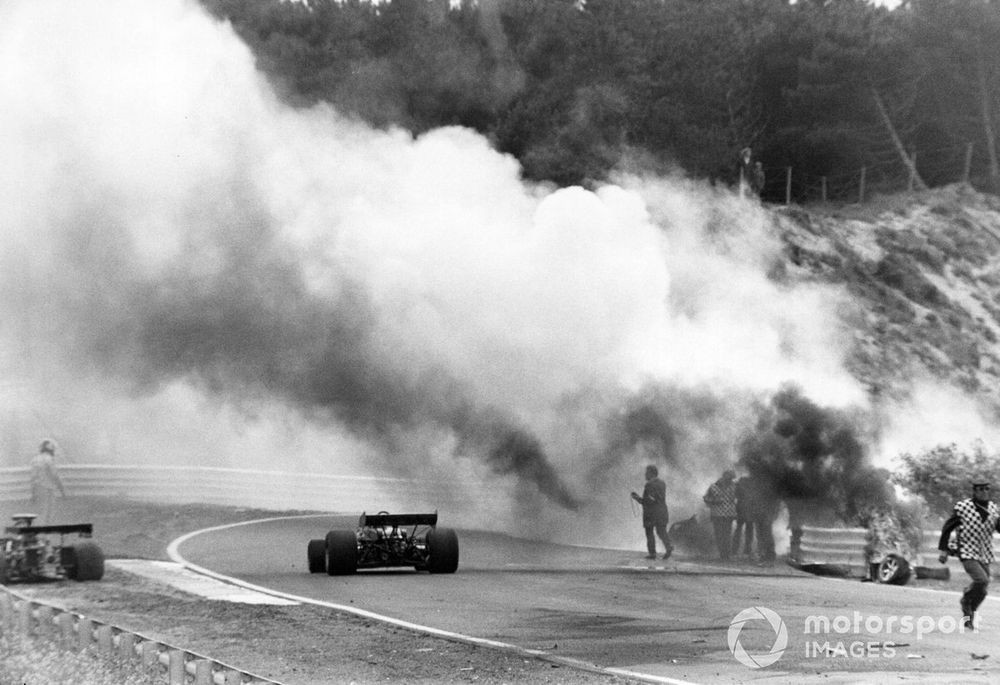
Roger Williamson was going to be a world champion. The way he handled a Formula 3 GRD 372 in 1972 and an F2 March-BMW 732 in '73 left no doubt, and a test for BRM at Silverstone in February in the latter year merely confirmed it. He was... fast. But there was more to him than that; he had an unquenchable determination, and he never gave up.
Born in Leicester in February 1948, the 25-year-old car dealer started the hard way. First, there were victories in his indecently quick Ford Anglia, then in 1971 a March 713 bought-on-hire purchase.
As builder and racing enthusiast Tom Wheatcroft involved himself partway through that season, Williamson moved consistently to the fore and their relationship blossomed into a deep friendship. Williamson cleaned up in F3 in 1972, and once Wheatcroft had equipped him with the March in '73, after their move to F2, hugely impressive performances at Rouen and Misano were rewarded with a triumph over Vittorio Brambilla and Patrick Depailler in the Monza Lotteria.
He was sensational in the BRM test, equalling the lap record in the unloved P180 and beating it in the P160C. Williamson then graduated to Formula 1 at the British Grand Prix, when Wheatcroft hired the works March 731 as a toe-in-the-water exercise.
Behind the scenes, Ken Tyrrell was keen to sign him to replace Jackie Stewart for 1974, having been informed that April of the Scot's intention to retire at the end of '73. But Roger had such an affinity with Wheatcroft that a deal had been agreed by Tom - who later planned his own F1 car - with Pat McLaren to buy a brace of McLaren M23s.
Williamson was a victim of Jody Scheckter's shunt at Silverstone. At Zandvoort a fortnight later he made a poor start but had worked up to 13th after eight laps, chased by David Purley's similar LEC Racing March.

Going into the first of two very quick fifth-gear right-hand curves out on the back of the circuit at Scheivlak, Roger's left-front tyre exploded. The red March veered into the metal barrier. In Zandvoort's big update, it had been incorrectly installed in sand, not concrete, and acted as a launching ramp.
The 731 was thrown 70 metres before landing upside down and sliding along the track for another 100, spewing fuel. It came to rest on the apex of the second fast right-hander past Hondenvlak, a fire briefly subsiding.
The instincts of Purley, an ex-paratrooper, kicked in. He was the only driver to stop and sprinted to the accident scene. He found Roger alive, but trapped in the cockpit of the upturned car. None of the marshals had fireproof clothing and they stood transfixed while, no more than 90 metres beyond the right-hander, the crew of a firefighting vehicle resolutely stayed in position.
Purley implored the marshals to help. None did. They stood and watched as the small fire became a conflagration
In harrowing scenes transmitted across the globe, Purley single-handedly tried to push the March over onto its wheels, as Williamson's desperate pleas echoed in his head. He strained so hard that he ruptured blood vessels in both arms.
For two or three crucial minutes, there was sufficient time for a group of strong men to have turned the March over and helped Roger out. But no one aided Purley. Police with dogs restrained any spectator brave enough to consider that. Then the fire flared up again. Purley ran across the track to grab an extinguisher, but it didn't work.
Finally, one marshal came forward with another one. It, too, malfunctioned. Purley implored the marshals to help. None did. They stood and watched as the small fire became a conflagration. Haunted by a terrible sense of inadequacy, an exhausted Purley was finally dragged away by the marshals. He swatted them away angrily, weeping with frustration.
"I could see Roger was alive and I could hear him shouting, but I couldn't get the car over," he said. "I was trying to get people to help me, and if I could have turned the car over he would have been all right, we could have got him out."

Throughout the horror, the race continued. Nobody else stopped. Other drivers swept through the white smoke. Chillingly, winner Jackie Stewart recalled many years later: "We drove through fire a lot back then."
GPDA safety representatives Denny Hulme and Mike Hailwood, who had heroically rescued Clay Regazzoni from his burning BRM earlier in the season at Kyalami, later said they were ashamed that they hadn't stopped to help Purley. But that was how it was back then. Later, like Hailwood, Purley was awarded the George Medal for gallantry. Until his death in 1985, he would be known as 'Brave Dave'.
The Dutch organisers callously suggested that Williamson had died in the impact. He had not. He was asphyxiated. As their sacred race ran its course, marshals belatedly righted the car and threw a sheet over the man they had left to die in its cockpit.
"We just loved him," recalls Trevor Foster, who ran him in F2. "We thought he was brilliant. Roger never used to give up."
BRM team manager Tim Parnell had no doubts about his talent either: "He was terrific. Roger Williamson, without a doubt, was a future world champion."
Williamson's death eventually brought about enhanced safety standards, better marshalling and improved firefighting equipment and techniques. But that all came too late for this gritty little racer.
Thanks to driver Allard Kalff, a memorial was unveiled to Roger, and Piers Courage, at Zandvoort. For those who turned out so many years later to remember the way that Roger would crouch in the cockpit during one of his charges, the prospect of him driving a McLaren M23 against Emerson Fittipaldi in 1974 was still simply too poignant to contemplate.
"The day we lost Roger part of my motor racing spirit died," Tom Wheatcroft admitted. "Nobody could take his place in my heart."








